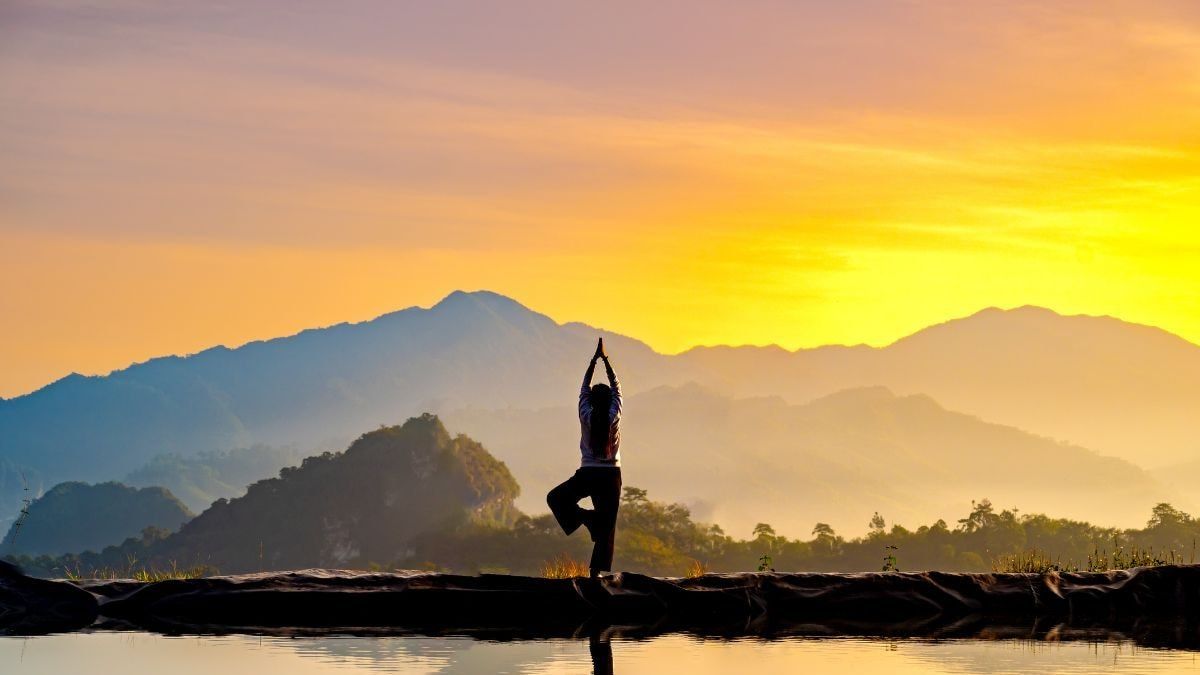Our exercise regimen is often a response to the demand from the outside world to appear fit, toned and visually attractive. However, what was once about developing abs has now changed to strengthening the core.
The core muscles, which include the abdominals, are found in the abdomen, pelvis and back and the importance of keeping them healthy has been recognized for the sake of our posture, balance and stability. Most importantly, they work with other muscles in the body, taking on the real impact of the activities. A strong core also reduces the chances of suffering from stress injuries.
YOGA'S CONCERN FOR THE CORE
In Yoga, emphasis is placed on the exercise of the central area, not only for the improvement of the muscles but also for the functioning of the vital organs of the abdominal cavity, the nervous system, the vascular vessels and the secretory glands.
For example, in yoga postures, the digestive organs receive an increased blood supply due to intra-abdominal compression, forceful movements of the diaphragm, and improved breathing.
On the contrary, in other strenuous exercises, the digestive system is deprived of the normal blood supply, which is diverted to the muscles. In his work Cyclopedia Yoga*, yoga guru and former president of the Yoga Institute, Dr. Jayadeva Yogendra, says: “Well-formed muscles are necessary as they account for an average of 43 percent of one's weight, but Muscle development should not come at the expense of other important body systems. “Most of these (regular physical exercise) techniques presuppose a healthy constitution, which is often not the case.” He adds that the movements, when repeated too frequently, cause a lot of wear and tear, especially of muscle tissue, and also an increase in nervous agitation.
COMMON YOGA EXERCISES USED FOR THE CORE
Yoga has poses that can be used like versions of planks, V-seats, and bridges that are part of core training. Phalakasana, Setubandhasana, Naukasana, Vashishtasana, Ustrasana, Adhomukhasvanasana, Paschimottanasana, Dhanurasana, Pavanmuktasana, Virabhadrasana, Cat-Cow Pose, Hastapadasana and Bhujangasana are some of those postures.
However, the skill in the practice of Yoga lies in the doing. Instead of trying to see how much stress our bodies can handle, the original goal of Yoga is to increase strength and promote good health. Yoga is not violent, does not fatigue and should lead to balance.
SUSTAINABLE YOGA SEQUENCE FOR CORE MUSCLES
These lesser-known and seemingly harmless poses can help build core strength well into old age. In this sequence, more than repeating movements, perseverance is important. Set aside 20 minutes every day for three months to start seeing the benefits.
Kapalbhati Kriya – Trim abdominal fat and tone the abdomen area. It helps to move from the state of Tamas to Rajas (Inertia to Activity). Stimulates the abdominal organs. Improves the functioning of the digestive tract.
• Sit comfortably in a chair with your spine erect.
• Breathe deeply and exhale briefly and forcefully, contracting your navel. Do 30 to 40 exhalations.
• Inhalation is passive, that is, the air automatically fills the lungs.
• Do 3 to 5 rounds with breaks between rounds.
diaphragmatic breathing – Tones the abdomen, stimulates the abdominal organs.
• Sit comfortably with your back straight and shoulders relaxed.
• Place one hand on your abdomen and feel it inflate as you inhale deeply and continuously.
• Exhale slowly and completely, bringing your navel toward your spine.
• Repeat 10 times.
Seated Parvatasana (Seated Mountain Pose) – Pulls all abdominal muscles, stretches and exercises the waist and helps reduce flabby abdomen.
• Sit in Sukhasana.
• As you inhale, raise your hands to your sides and bring them above your head. Once your palms touch, stretch your arms upward to raise your upper body to its maximum height. The arms should touch the ears, the abdomen inward and the gaze fixed on a point ahead. Hold this stretched position for a few seconds.
• Turn your palms outward and, as you exhale, bring your arms back to the starting position.
• Do five rounds.
Yogamudrasana (Yoga Symbol, Psychic Union posture) – Deep abdominal compression massages the abdomen. Benefits internal organs and promotes elimination.
• Sit upright in Padmasana, Vajrasana or Sukhasana.
• Bring your arms back, take your left wrist with your right hand and, expanding your chest, inhale deeply.
• Exhaling, arch your spine and lean forward until your forehead touches the floor. Hold for a few seconds with suspended breathing.
• Return to the original position, inhaling.
• Do five rounds.
Sarpasana (snake pose) – An advanced version of Bhujangasana, it helps strengthen the core and massage the abdominal organs.
• Lie face down with your legs straight, hands on hips, and head resting on either side.
• Clasp your hands behind your back, above your hips.
• Inhaling, raise your head and chest as much as you can without straining. The legs should be firmly supported on the floor. Stretch your intertwined arms and stay there, breathing normally. The core, thighs, hips, back muscles and shoulders would all participate in the final pose.
• Exhaling, release your hands and return to the starting position and relax.
• Do five rounds.
Pada Sanchalanasana (Cycling in lying position) – Strengthens abdominal and lumbar muscles.
• Lie on your back with your legs bent at the knees, hands at your sides, and palms facing down.
• Raise both legs and move them in cycling movements as if you were pedaling a bicycle, making large circles. Do this 10 times each, clockwise and counterclockwise.
• In the next stage, move both legs together clockwise and then counterclockwise. After 10 rounds of each, lower your legs and stretch them.
Savasana – End the session with relaxation.
(Note: This article is for informational purposes. Always consult with your doctor before beginning any exercise protocol. Remember, yoga practices should first be learned from an experienced yoga teacher.)
*Cyclopedia Yoga vol. I, with special information on Asana (Ed. Dr. Jayadeva Yogendra Ph.D), The Yoga Institute, 1997.
The author is a journalist, cancer survivor, and certified yoga teacher. You can contact her at [email protected].
















